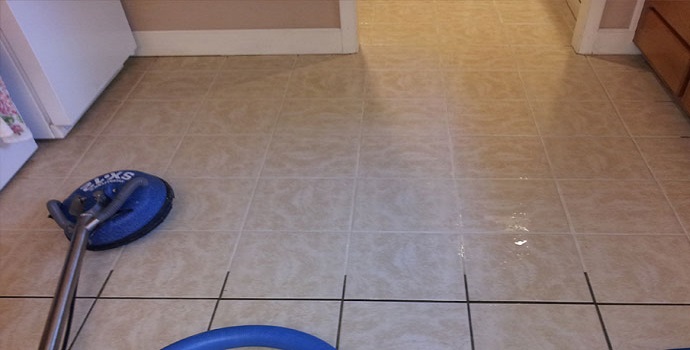The grout around the shower tiles may change colour due to mould, mildew, dirt, or spilled personal care products. Tiles are made of durable materials, which are easily maintained and cleaned, but keeping the grout between them looking clean can be a big challenge. Learn the best ways to deep clean tile and grout and maintain your grout while maintaining the condition of the tiles. Call Tims Tile and Grout Cleaning Sydney a professional tile cleaning company.

1. Rinse With Warm Water
Start cleaning the grout with warm water and a stiff brush. You may find it very helpful to use a spray bottle with a pressed, targeted system. Scrub the grout with a circular motion to release all the dirt and grime, repeating the process several times. Also, a steam mop can serve as a simple, highly effective, and environmentally friendly way to clean grout. This machine removes hot water as steam to help to lift stains, especially in combination with the intended scrub.
2. Diluted Vinegar
Vinegar is a non-toxic substance that can be really very effective in cleaning grout. Dilute acid by mixing equal parts of vinegar and water and then using a brush or spray bottle, apply this mixture to the grout. Wait for 5 minutes for the mixture to dry before rubbing in a circular motion with a brush.
3. Baking Soda Paste
Baking soda and water make a strong, satin-coating paste. Fitted with a brush with strong bristles or a sponge, this paste can help to remove grout stains, reducing effort. Baking soda also has natural anti-inflammatory properties, especially when combined with vinegar. If baking soda and water alone are not enough to remove the stains, use this paste to soak and sprinkle with vinegar and wait for the foam to form on the surface. This foam has a soothing effect, especially if you wait a few minutes for deep tile and grout cleaning, before starting to scrub.
4. Hydrogen Peroxide
Hydrogen peroxide is another soft, flushing solution that can remove stains, and mildew from the bathroom. Try using hydrogen peroxide alone, sprayed with a spray bottle or cloth, and scrubbing the grout with a brush. For strong spots, it can be mixed with baking soda also to make a sticky paste.
5. Chlorine Bleach
Regular use of chlorine bleach can cause your grout to break down quickly, leading to safety or cracking, which may lead to recurrence. Chlorine bleach is effective on some stubborn stains, but always be sure to use bleach as a last resort. In general, to Deep Tile And Grout Cleaning experts recommend avoiding chlorine bleach, and using only a small amount of this solution at stubborn levels, but washing the areas carefully before using them in any way is an important step in preventing accidental reactions.
6. Use Steam To Scrub All The Bathroom Tiles
In the bathroom, you probably look at not only the excess dirt and debris but also the remains of soap scum, which can be really very difficult to remove. By spraying tile flooring and shower walls with a surface cleaner, and then soaking hot water for five minutes until steam builds up. You may also contact us at 02 8319 1071 for further information.
Published on: May 1, 2023
Last updated on: May 2, 2023
